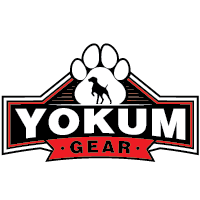Ensuring the comfort and support of your dog is paramount, especially when dealing with hip-related issues. Selecting the right hip harness for your furry friend can significantly improve their mobility and quality of life. This guide will walk you through the essential aspects to consider when choosing the perfect hip harness for your dog.
Understanding Hip Harnesses
Hip harnesses are designed to support dogs suffering from hip dysplasia, arthritis, or other mobility challenges. These harnesses help by redistributing weight, providing stability, and reducing the strain on the dog's hip joints. They can also aid in post-surgical recovery and provide additional support for older dogs.
Key Features to Look For
When selecting a hip harness, there are several critical features to consider to ensure the best fit and functionality for your dog:
1. Size and Fit
Accurate measurement is crucial for a proper fit. The harness should securely support the hips without being too tight or too loose. Measure your dog's girth, typically around the ribcage or the widest part of the waist, and consult the manufacturer's size chart to choose the correct size.
2. Material and Comfort
Comfort is key to ensure your dog adapts well to wearing the harness. Look for materials that are soft yet durable, like padded nylon or breathable mesh. The harness should have sufficient cushioning to prevent chafing and discomfort during prolonged use.
3. Adjustable Straps
Adjustability is vital to tailor the fit according to your dog’s body shape and size. Harnesses with multiple adjustable points provide a more customizable fit. Ensure the straps are easy to adjust but secure enough to stay in place during movement.
4. Ease of Use
Choose a hip harness that is easy to put on and take off, especially if your dog is not accustomed to wearing one. Harnesses with quick-release buckles or step-in designs can simplify the process, making it less stressful for both you and your dog.
5. Support and Stability
The primary purpose of a hip harness is to provide support and stability. Look for harnesses that distribute weight evenly across the hips and have a sturdy, ergonomic design to aid your dog’s movement. Some harnesses also come with handles that allow you to lift and support your dog when needed.
6. Additional Features
Some harnesses offer extra features like reflective stitching for visibility in low light, waterproof materials, or detachable components for easier cleaning. Consider these additional features based on your lifestyle and your dog's specific needs.
Popular Types of Hip Harnesses
There are several types of hip harnesses on the market, each catering to different levels of support and mobility. Here are a few common types:
1. Lift Harnesses
These harnesses come with handles that allow owners to lift or support their dog’s hindquarters, particularly useful for dogs with severe hip problems or post-surgery recovery.
2. Full-Body Harnesses
These provide support for both the front and hind limbs, distributing the dog’s weight across the entire body. They are suitable for dogs with multiple mobility issues.
3. Rear Support Harnesses
Specifically designed for dogs needing support only in the hindquarters, these harnesses are ideal for moderate hip or mobility issues.
4. Mobility Harnesses
These versatile harnesses offer comprehensive support and are adjustable for various levels of assistance, often combining features of lift and rear support harnesses.
Consulting Your Veterinarian
Before making a final decision, consult with your veterinarian to discuss the most suitable options for your dog's specific condition. A professional assessment can provide insight into which type of harness will offer the most benefit and ensure that it meets your dog’s medical and physical needs.
Conclusion
Choosing the right hip harness for your dog can make a significant difference in their comfort and mobility. By considering factors such as size, material, adjustability, and specific support needs, you can find a harness that offers the best possible support for your pet. Always remember to consult with your veterinarian and pay close attention to your dog’s reactions to ensure you’ve made the best choice for their well-being.

